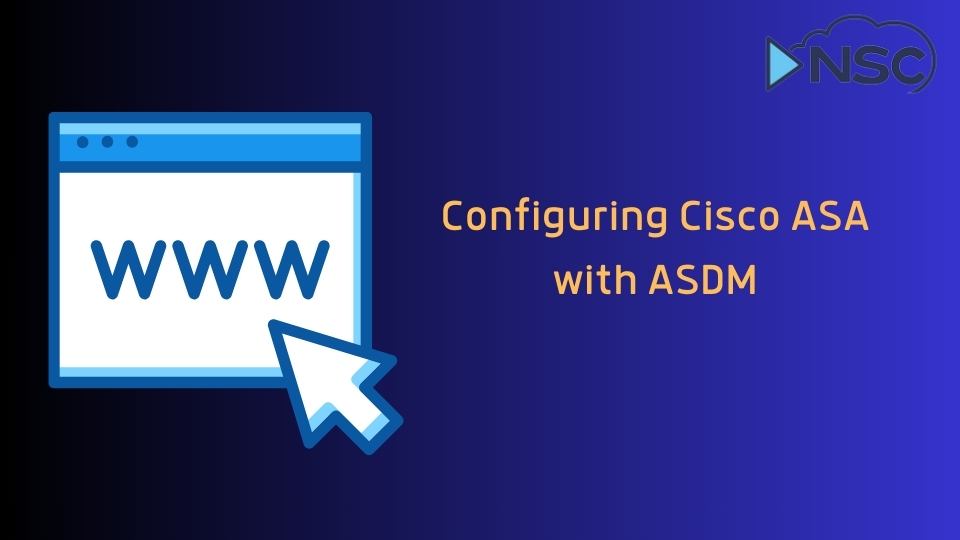Cisco Adaptive Security Appliance (ASA) devices are pivotal in securing network boundaries and managing traffic flows in countless organizations worldwide.
The Adaptive Security Device Manager (ASDM) serves as a user-friendly interface to simplify the management of Cisco ASA appliances, allowing administrators to visualize and control their network security configurations without deep command-line knowledge.
This blogpost aims to guide you through the essential steps of configuring Cisco ASA using ASDM, covering both basic and intermediate settings that cater to various network environments. From installing ASDM to setting up complex firewall rules and VPNs, we provide comprehensive insights to ensure your network remains robust against evolving threats.
By the end of this blogpost, you will have a solid foundation to manage and optimize your Cisco security appliance effectively, enhancing both your network's integrity and performance.
Getting Started with ASDM
To effectively manage your Cisco devices, familiarizing yourself with the Cisco ASDM (Adaptive Security Device Manager) is essential. Our guide provides a comprehensive overview of how to use Cisco ASDM for network security management.
System requirements for installing ASDM are crucial to ensure compatibility and optimal performance. Before installation, ensure your system meets the required specifications outlined on Cisco's official support pages. The step-by-step installation process involves:
- Downloading ASDM from Cisco's official website. Ensure you select the version that corresponds with your Cisco ASA firmware.
- Installing ASDM on a local computer involves running the installer and following the prompts to complete the setup, allowing for management access to your ASA device.
For those looking to deepen their understanding of Cisco technologies, including advanced configurations beyond the ASDM basics, consider exploring the Cisco SCOR 350-701 course by Ahmad available on our platform.
Accessing ASDM
To access ASDM through a web browser, you need the ASA device's IP address. First-time access may require setting up network parameters and security settings to establish a connection. The initial login prompts you to enter credentials, which should be secured to prevent unauthorized access.
By following these steps, you’ll set a strong foundation for further configuration and management of your Cisco ASA device using ASDM.

Basic Configuration of Cisco ASA with ASDM
To configure Cisco ASA effectively, setting up interfaces is the first critical step. This includes:
- Configuring network interfaces for different security levels to define how traffic is treated based on its entry and exit points.
- Assigning IP addresses to interfaces is vital for proper network communication and management.
Configuring Firewall Policies
Creating and managing access control lists (ACLs) forms the backbone of network security management:
- Defining rules for inbound and outbound traffic ensures that only legitimate traffic is allowed, and potential threats are mitigated.
For those who wish to explore deeper into network security and policy configurations, our Cisco ISE course by Ahmad provides detailed insights and advanced training in managing identity services within Cisco environments.
Intermediate Configuration Techniques
Understanding and setting up NAT on Cisco ASA is essential for managing public and private IP address mappings:
- Setting up NAT rules allows internal users to access the internet and external services without exposing internal network structures.
VPN (Virtual Private Network) Setup
Configuring VPNs is crucial for secure remote access:
- Types of VPNs supported by Cisco ASA include site-to-site and remote access VPNs.
- A step-by-step guide to configuring a basic VPN ensures secure connections between distributed networks and remote users.
Advanced Threat Protection
To enhance security, integrating Cisco's threat defense mechanisms is recommended:
- Setting up intrusion prevention and detection features provides proactive security measures to detect and prevent potential threats in real time.
Monitoring and Maintenance
Monitoring your network and security systems is crucial for maintaining robust protection. ASDM provides a powerful suite of monitoring tools that allow administrators to keep a close watch on network behavior and security events. Key features include:
- Setting up dashboards for a visual overview of network health and security status.
- Real-time logging capabilities that help in identifying and diagnosing issues promptly, ensuring rapid response to potential threats.
Updating and Upgrading ASA and ASDM
To ensure your Cisco ASA and ASDM continue to provide optimal security and performance, regular updates are essential:
- Best practices for updating firmware and software include checking compatibility, scheduling updates during low-traffic periods, and maintaining regular backup configurations.
- How to safely apply updates using ASDM minimizes downtime and ensures that your configurations remain intact.
Summary
We have covered the essential steps of configuring Cisco ASA using ASDM, from installation and basic setup to more advanced configurations like VPN setup and threat management.
By following this guide, network administrators can enhance their skills in network security management, ensuring their infrastructure is both secure and efficient.
Remember, mastering Cisco ASA through ASDM not only improves your network's security but also enhances your administrative capabilities, making it an invaluable skill set in today’s networked world.


